Employee List Samples
-

Employee Attendance List
download now -

Employee Awards List
download now -

Employee Contact List
download now -

Government Employee List
download now -

Employee Directory and Contact List Form Template
download now -

Massage Establishment Employee List
download now -

Research Project Employee List
download now -

Employee Email Intranet ID List
download now -

Sample Office Staff Employee List
download now -

Employee Extension Design List
download now -
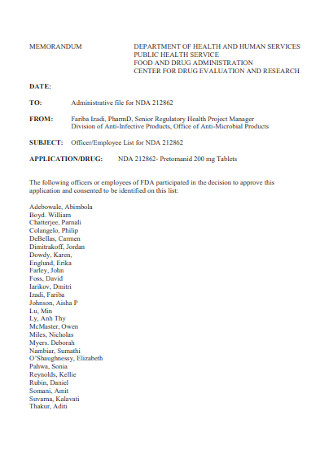
Officers and Employees List
download now -

Sample Employees List Template
download now -

Sample Employee List and Form
download now -
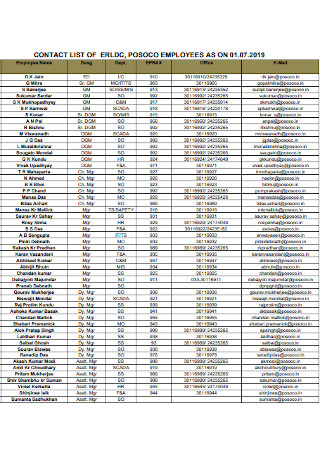
Employees Contact List Template
download now -
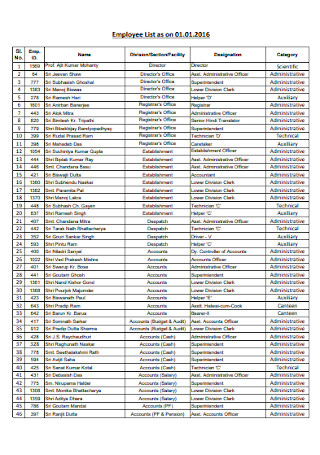
Simple Employee Chart List
download now -

Office Employee Team Contact List
download now -

College Employee Profile List
download now -

Basic Employee Booklet List
download now -

Food Server Employee List
download now -

Employee Phone Portal List
download now -

Sample Employees Claim List
download now -

Current Department Employee List
download now -

Employee Orientation Cover List
download now -

Outfitter People Employee List
download now -

Employee Supervisor List Format
download now -

Sample Business Employee List
download now -

List of Officers and Employees
download now -
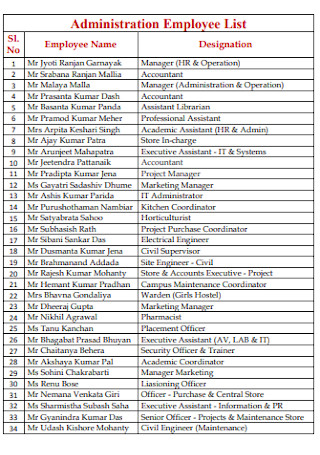
Administration Employee List
download now -

Tenant Employee List
download now -

Standard Employee List
download now -
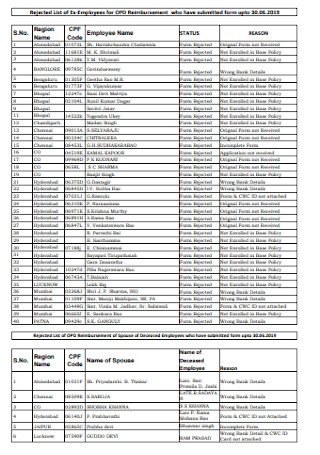
Rejected List of Ex-Employees
download now -

License Office Employee List
download now -

Employee Exit Task List
download now -

Sample Labor Staff List
download now -
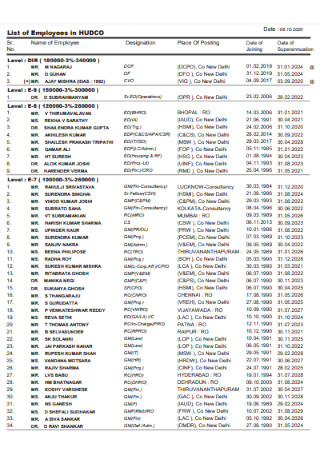
Printable Employee List
download now -

Employee List for Vendor Contacts
download now -

School Authorized Employee List
download now -
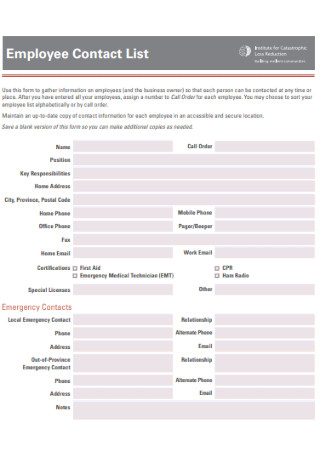
Employee Contact List Example
download now -
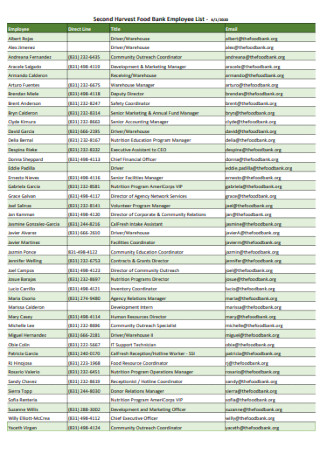
Food Bank Employee List
download now -

Employee List Change Form
download now -

Regional Office Employee List
download now -

General Business Employee List
download now -

Employee and Dependents Scholarship List
download now -

University Employee List
download now -

List of Regular Employees
download now -

Sample Provider Employee List
download now -
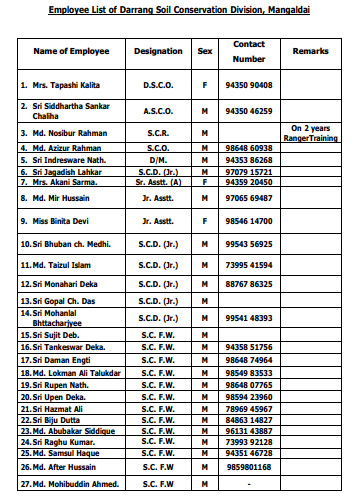
Formal Employee List
download now -

Standard Employee List Example
download now -

Employee Report List
download now -

Employee Program Training List
download now -

Sample Corporation Employee List
download now -

Professional Employee List
download now -

Employee Application List
download now -

School Employee List Layout
download now -

Sample Exiting Employee List
download now -

Simple List of Employees
download now
FREE Employee List s to Download
Employee List Format
Employee List Samples
The Common Elements of an Employee List
How to Create a Employee List
FAQs
Why is an employee list important?
What are other names of an employee list?
What does EIN mean?
How often should an employee list be updated?
What is the best format for maintaining an employee list?
How can an employee list support emergency preparedness?
What are the legal considerations when creating an employee list?
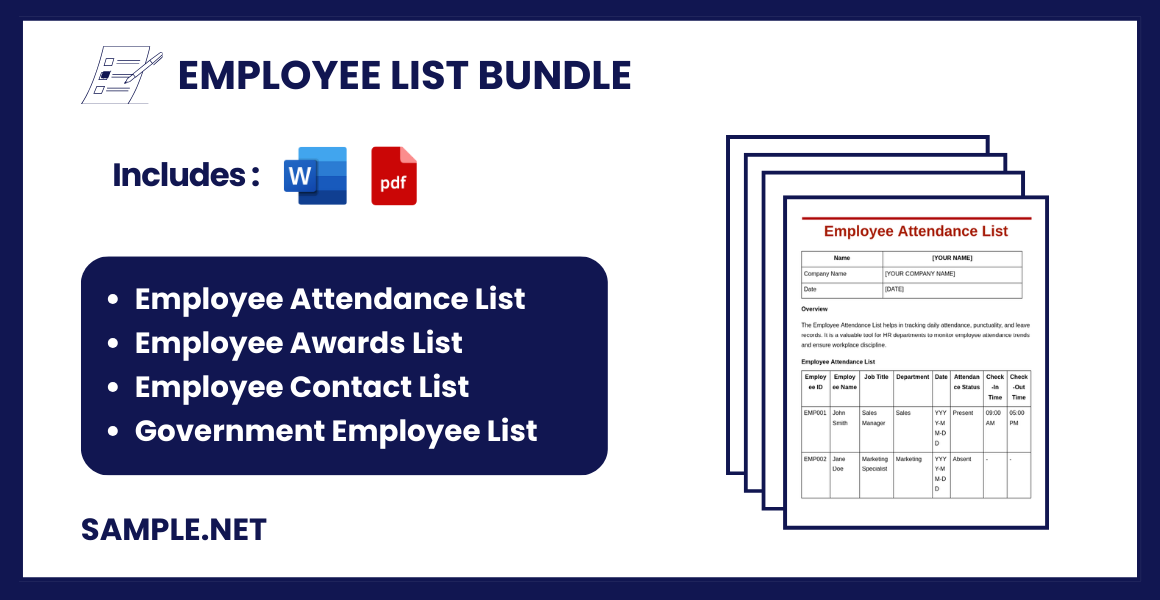
Employee List Format
| Employee ID | Name | Department | Position | Date of Joining | Phone Number | Status | |
|---|---|---|---|---|---|---|---|
| 001 | John Doe | Marketing | Marketing Manager | YYYY-MM-DD | johndoe@email.com | +1234567890 | Active |
| 002 | Jane Smith | Sales | Sales Executive | YYYY-MM-DD | janesmith@email.com | +0987654321 | Active |
| 003 | Bob Johnson | HR | HR Coordinator | YYYY-MM-DD | bobjohnson@email.com | +1122334455 | Active |
| 004 | Alice Brown | IT | Software Engineer | YYYY-MM-DD | alicebrown@email.com | +6677889900 | Inactive |
| 005 | Charlie Black | Finance | Accountant | YYYY-MM-DD | charlieblack@email.com | +5566778899 | Active |
Column Details:
- Employee ID: Unique identifier for each employee.
- Name: Full name of the employee.
- Department: Department in which the employee works.
- Position: Employee’s job title or position.
- Date of Joining: The date the employee started working.
- Email: Contact email for communication.
- Phone Number: Employee’s phone number.
- Status: Current employment status (e.g., Active, Inactive, On Leave).
What is an Employee List?
An employee list is a structured document or digital record that includes details about employees in an organization. Typically, it consists of names, job titles, departments, and sometimes additional information like contact numbers, email addresses, and employment start dates. The list is used for tracking employee information and can serve multiple operational and HR purposes. You can also see more on Job Lists.
The Common Elements of an Employee List

In every business, an employee list’s content doesn’t have to be the same. It depends on the company on what specific details should be covered in the list. You can also see more on Attendance Lists. But generally, employee lists would tackle the following:
How to Create a Employee List

It’s time to apply what you learned to the next level by creating the employee list itself. You can easily create such lists with sample employee lists, as seen above. Just pick a template to set the content, format, style, design, and more. And in order to perfect your employee list’s details, kindly follow these steps:
Step 1: Know Your Purpose and Goals
First of all, what are your company’s purpose and smart goals for making the employee list? Do you want to collate specifically on each employee’s personal information or maybe for payroll and accounting purposes? The point is you would know what set of employee information is worth gathering when you settle your goals ahead.
Step 2: Organize with Tables and Other Graphical Data
As you begin listing all the employee information required, don’t forget to arrange your data with tables, bar graphs, charts, and other graphical data. Indeed, a general list merely incorporates a numbered set of data for each employee but you can also be more creative and organized with visual organizers. And if they are making your list easier, the better.
Step 3: Focus on Relevant Employee Information Only
While it is good to be detailed with the employee list, try to avoid overdoing it as well. Maybe you grabbed too much information sheet like what an employee does every single minute. Relevance is the key. So if you need the information for recordkeeping, focus on recordkeeping-worthy data alone.
Step 4: Update the List Regularly for Possible Changes
Everything written in the employee list can be changed from time to time. So be prepared for regular updates like when the salary amount changes, bank account changes, or if a new employee shall be added. Thus, take evaluations form regularly in case you need to change the list’s details so that the employee list stays dependable for long.
FAQs
Why is an employee list important?
Employee lists are important depending on the intentions of making them. One common example is for the sake of organizing all the employees’ files or business documents. Also, an employer can tell which employees met and failed to meet their expectations. More so, the list is useful in setting a training plan and checking who else has not completed the employment requirements yet.
What are other names of an employee list?
An employee list can be referred to as a rota, roster, master list, daily schedule, or simply list of employees.
What does EIN mean?
EIN is an acronym for an employer identification number. It is a unique serial number assigned by the Internal Revenue Service (IRS) towards companies in America for identification reasons. You can also see more on Task Lists.
How often should an employee list be updated?
Ideally, an employee list should be updated whenever there is a change in personnel or at least monthly for accuracy.
What is the best format for maintaining an employee list?
The best format depends on organizational needs. Small companies may use spreadsheets, while larger companies may benefit from dedicated HR software. Digital formats offer better scalability and ease of maintenance compared to paper lists. You can also see more on Product Lists.
How can an employee list support emergency preparedness?
During emergencies, an employee list provides immediate access to contact information, allowing rapid communication and coordination. It may also include emergency contacts for each employee, enhancing workplace safety and response times.
What are the legal considerations when creating an employee list?
Employee lists should comply with data privacy regulations, such as GDPR or CCPA, to protect employee information. Only necessary details should be recorded, and access should be limited to authorized personnel. You can also see more on Work Lists.
